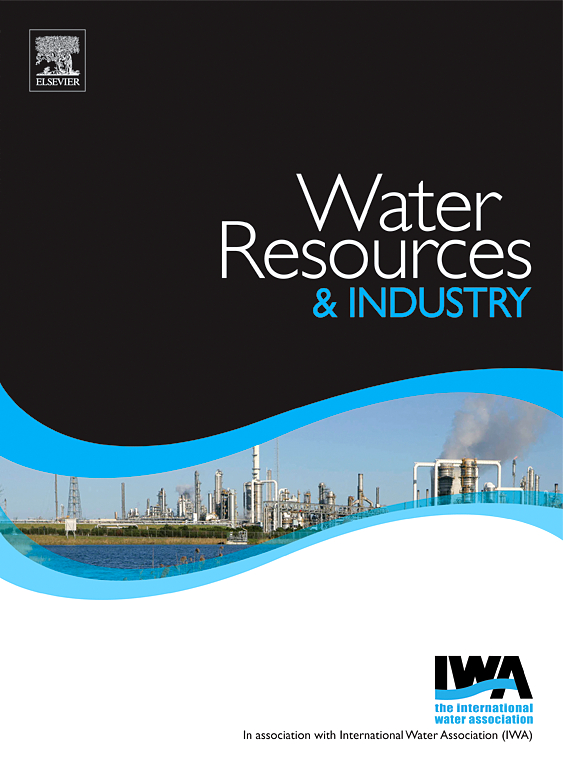微污染物可以作为诱变剂吗?中欧波兰地表径流、河水和沉积物的个案研究
IF 7.5
3区 工程技术
Q1 WATER RESOURCES
引用次数: 0
摘要
水污染是一个长期存在的全球性问题,微污染物对生态系统和人类健康构成风险。本研究旨在:(i)在中等规模的农业集水区中识别10种苯并三唑(BTRs)和10种双酚(bp), (ii)估计有害MPs的每日负荷并评估其环境风险,(iii)评估Wełna河集水区(波兰奥得河流域)的地表径流(SR)、河水(RW)、底部沉积物上清(SBS)和悬浮沉积物(SS)的致突变性。样本于2022年10月和2023年1月采集。采用USAEME和GC-MS分析BTRs和BPs,采用微孔板Ames MPF试验评估致突变性。所有样品均检测到5Cl-BTR, BPA含量为71.4%,5Cl-BTR和BPAP的最高浓度分别为16393 ng/L和99998 ng/L。艾姆斯试验证实,所有收集的样本在秋季的诱变程度高于冬季。在环境风险评估中,除1H-BTR、5Cl-BTR和UV-P(中等)外,大多数btr为低风险,bp为低至高风险。研究结果证实了MPs在水生环境中的存在及其潜在的诱变作用,尽管其他污染物也可能起作用。本文章由计算机程序翻译,如有差异,请以英文原文为准。

Can micropollutants act as mutagens? A case study of surface runoff, riverine water and sediments in Poland, central Europe
Water contamination is a longstanding global issue with micropollutants (MPs) posing risks to ecosystems and human health. This study aimed to: (i) identify 10 benzotriazoles (BTRs) and 10 bisphenols (BPs) in a mid-sized agricultural catchment, (ii) estimate daily loads of hazardous MPs and assess their environmental risks (iii) evaluate the mutagenicity of surface runoff (SR), riverine water (RW), supernatant from bottom sediment (SBS) and suspended sediments (SS) from the Wełna River catchment (Oder River basin, Poland). Samples were collected in October 2022 and January 2023. BTRs and BPs were analysed using USAEME and GC-MS, mutagenicity was assessed via microplate Ames MPF test. 5Cl-BTR was detected in all samples, BPA appeared in 71.4 %, the highest concentrations were 16,393 ng/L for 5Cl-BTR and 99,998 ng/L for BPAP. The Ames test confirmed mutagenicity in all collected sampleswith higher levels in autumn than in winter. Environmental risk assessment classified most BTRs as low-risk, except 1H-BTR, 5Cl-BTR and UV-P (medium) while BPs posed low to high risks. Findings confirm the presence of MPs in aquatic environments and their potential mutagenic effects although other pollutants may also contribute.
求助全文
通过发布文献求助,成功后即可免费获取论文全文。
去求助
来源期刊

Water Resources and Industry
Social Sciences-Geography, Planning and Development
CiteScore
8.10
自引率
5.90%
发文量
23
审稿时长
75 days
期刊介绍:
Water Resources and Industry moves research to innovation by focusing on the role industry plays in the exploitation, management and treatment of water resources. Different industries use radically different water resources in their production processes, while they produce, treat and dispose a wide variety of wastewater qualities. Depending on the geographical location of the facilities, the impact on the local resources will vary, pre-empting the applicability of one single approach. The aims and scope of the journal include: -Industrial water footprint assessment - an evaluation of tools and methodologies -What constitutes good corporate governance and policy and how to evaluate water-related risk -What constitutes good stakeholder collaboration and engagement -New technologies enabling companies to better manage water resources -Integration of water and energy and of water treatment and production processes in industry
 求助内容:
求助内容: 应助结果提醒方式:
应助结果提醒方式:


